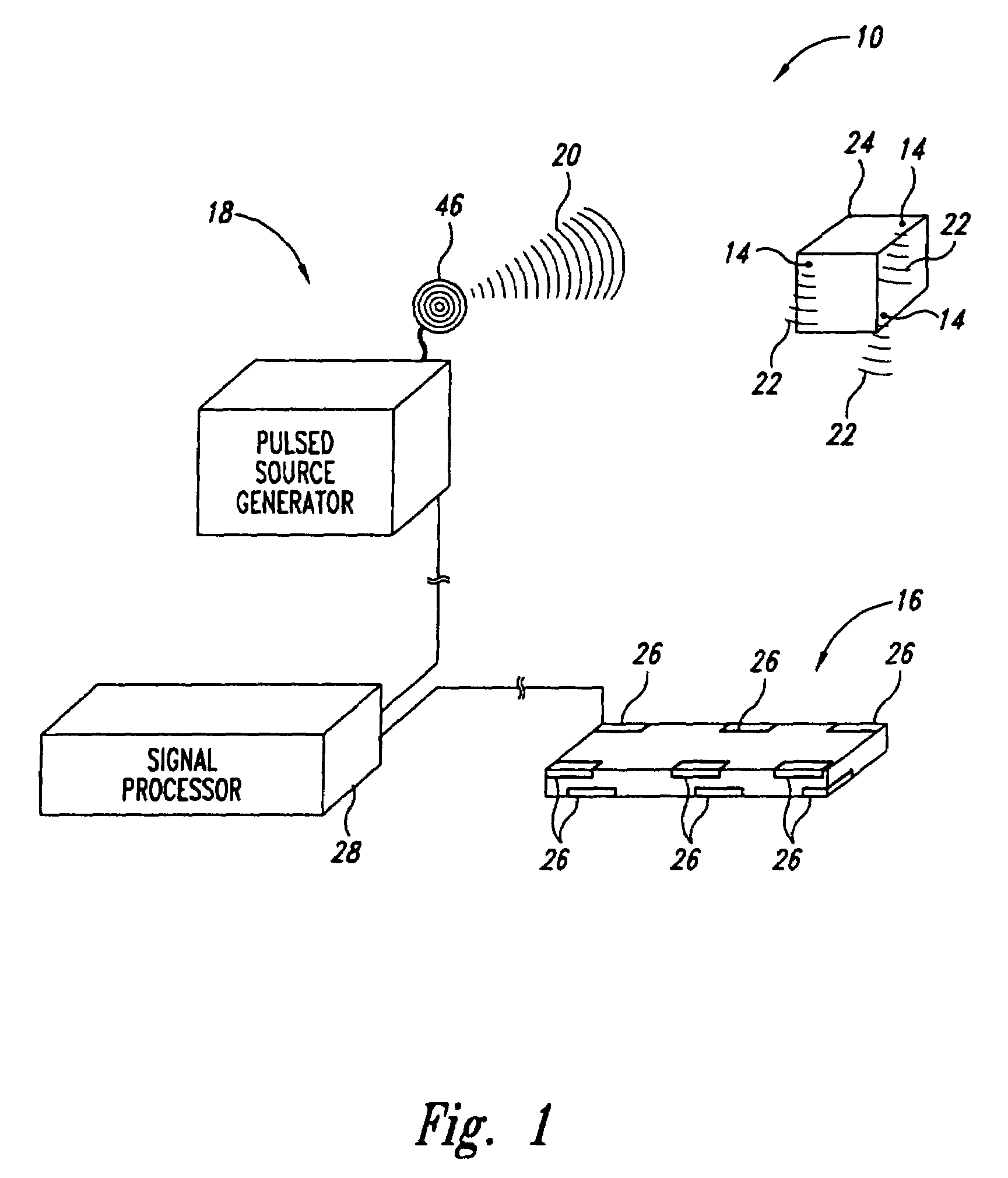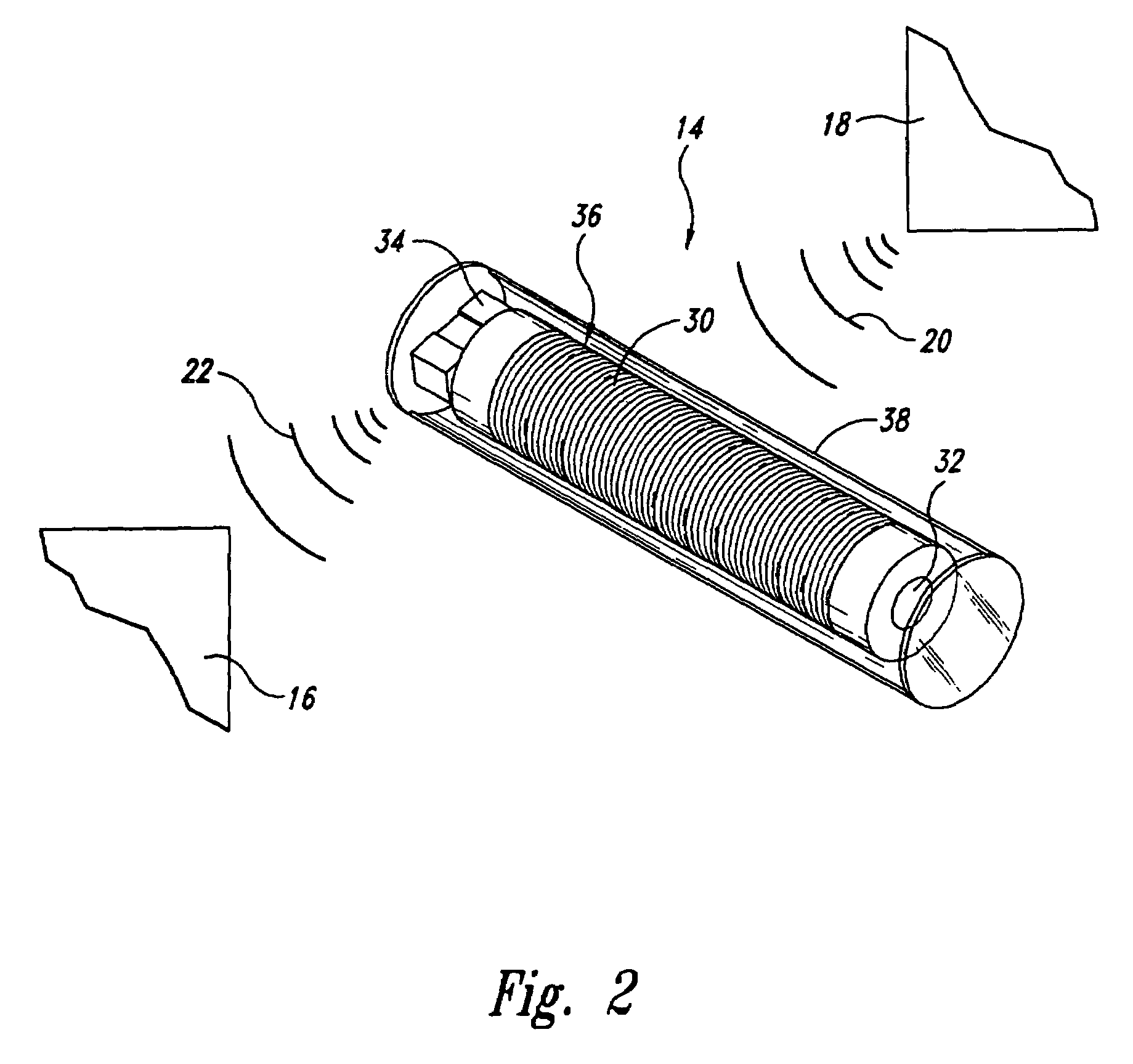System for spatially adjustable excitation of leadless miniature marker
a technology of leadless miniature markers and excitation systems, which is applied in the field of system for excitation of resonating miniature marker assemblies, can solve the problems of reducing the excitation energy reducing the excitation efficiency of the source coil, so as to achieve high energized
- Summary
- Abstract
- Description
- Claims
- Application Information
AI Technical Summary
Benefits of technology
Problems solved by technology
Method used
Image
Examples
Embodiment Construction
[0034]In the following description, certain specific details are set forth in order to provide a thorough understanding of various embodiments of the invention. However, one skilled in the art will understand that the invention may be practiced without these details. In other instances, well-known structures associated with magnetic excitation systems, resonating markers, and activators have not been shown or described in detail to avoid unnecessarily obscuring the description of the embodiments of the invention.
[0035]FIGS. 1–16 illustrate a system and components for generating an excitation signal for activating a resonating marker assembly and locating the marker in three-dimensional space in accordance with embodiments of the present invention. Several of the components described below with reference to FIGS. 1–16 can also be used in systems for performing methods in accordance with aspects of the present invention. Therefore, like reference numbers refer to like components and f...
PUM
 Login to View More
Login to View More Abstract
Description
Claims
Application Information
 Login to View More
Login to View More - R&D
- Intellectual Property
- Life Sciences
- Materials
- Tech Scout
- Unparalleled Data Quality
- Higher Quality Content
- 60% Fewer Hallucinations
Browse by: Latest US Patents, China's latest patents, Technical Efficacy Thesaurus, Application Domain, Technology Topic, Popular Technical Reports.
© 2025 PatSnap. All rights reserved.Legal|Privacy policy|Modern Slavery Act Transparency Statement|Sitemap|About US| Contact US: help@patsnap.com



